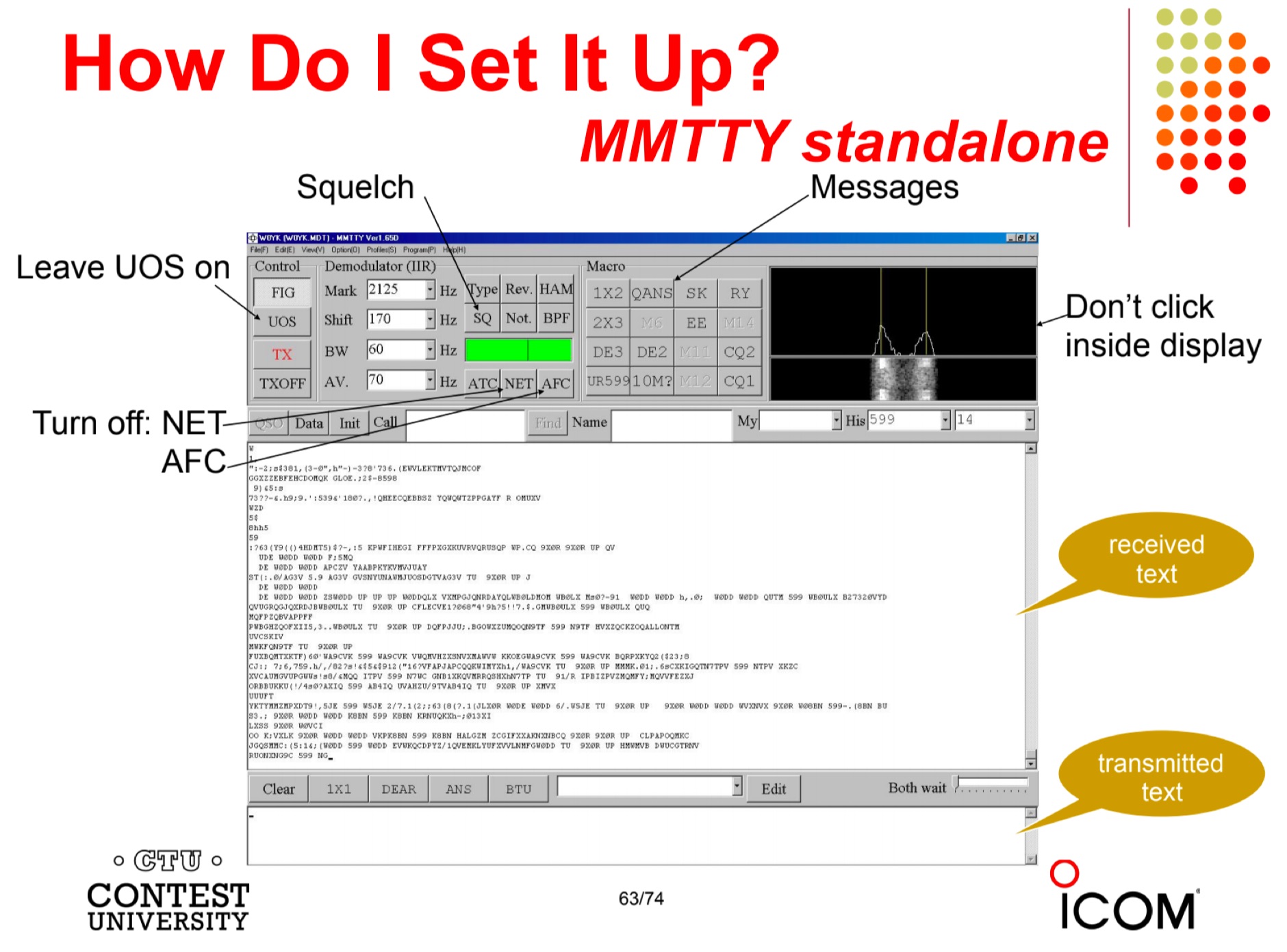

Most rare stations or DXpeditions operate on or near 14.080 MHz. The 20 metre band is the most popular band for this as it is also the general DX mainstay band for most modes. However other digimodes or data modes can be found on these bands.Īnother element of RTTY operation is that of DX chasing. It is found that there is comparatively little RTTY activity on what are termed the "WARC" amateur radio bands at 18 and 24 MHz. However this is quite adequate in view of the level of traffic that is found. On the fifteen metre amateur radio band the RTTY activity can be found on frequencies between 21.080 and 21.100 MHz.Īlthough the ten metre amateur radio band is much wider than any of the other HF bands, the amount of the band in which RTTY transmissions can be found is limited to 28.080 to 28.100 MHz. It is wise to leave a good margin to ensure that sidebands, etc do not spread onto this frequency. However great care must be exercised when operating at the top end of this section to ensure that no interference is caused to the beacons on 14.100 MHz. On the 20 metre ham radio band, RTTY activity can be found at the top end of the Morse or CW section of the band between frequencies of 14.080 and 14.099 MHz.

In view of the restrictions of the band, what activity there is can be found between frequencies of 10.110 and 10.150 MHz. In the USA, RTTY is permitted between 70, although most US activity is between 70. RTTY allocations for 40 metres vary greatly around the world in view of the different amateur radio band allocations. RTTY operation is typically found on frequencies between about 3.58 and 3.65 MHz although there are variations for some countries including Japan. It is also necessary to avoid the CW DX window between 1.830 and 1.840 MHz. There is little RTTY activity on this band, but what little there is can usually be found on frequencies between 1.800 and 1.820 MHz, although in many countries the bottom end of the band is 1810 kHz. A rough summary of RTTY frequencies is given in the table below:įrequencies where RTTY transmissions can be found. However this is not true in all cases because the different amateur radio bands have different bandwidths and also the requirements may be slightly different. the frequencies where amateur RTTY transmissions can be found are between 80 and 100 kHz above the bottom end of each band. Typically the radio teletype, RTTY frequencies, i.e. In view of the fact that the amateur radio bands are planned so that different modes are restricted to particular areas to reduce interference and ensure the optimum use of each band, so RTTY can be found in particular areas of the HF amateur radio bands. See also: Digimodes summary AMTOR RTTY PSK31 Packet radio PACTOR WSJT WSPR Amateur Radio RTTY Frequencies, Bands & Channels Radio teletype, RTTY is used on a number of the amateur radio bands on specific frequencies to comply with the bandplans and ensure operation is more effective. Logs received after dead line will count as Check Log. All logs must be sent within 7 (seven) days after the end of Contest.
#RTTY CONTESTS SOFTWARE#
Information about logger software please see.Each DXCC country on each band as 1 Multiplier.QSO with each different YB Prefixes on each band as 1 multiplier ( YB0-YB9 / YE0-YE9, YC0-YC9 / YF0-YF9, YD0-YD9 / YG0-YG9, 7A – 7I, 8A – 8I).Contacts with YB station count 10 Point.Contacts with other country in different continent count 3 Point.Contacts with other country in same continent count 2 Point.Contacts with own country count 1 point.


#RTTY CONTESTS SERIAL NUMBER#
Mode RTTY : 599 + Serial Number (eg: 599 001) Category – For amateurs around the world to contact as many other amateurs in as many countries and Indonesia (YB Land) contestersĬontact should made on 3.5, 7, 14, 21 and 28 MHz.


 0 kommentar(er)
0 kommentar(er)
